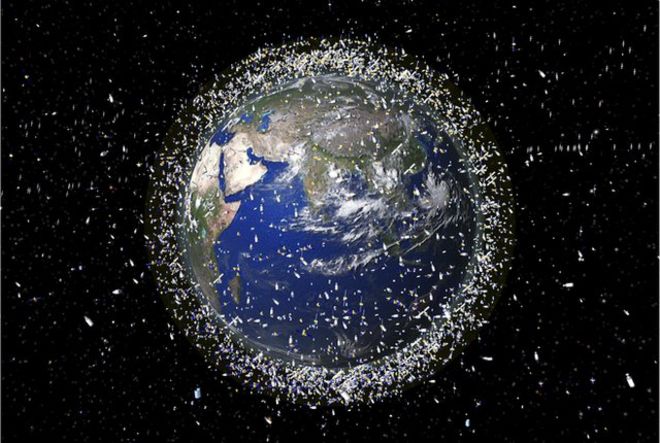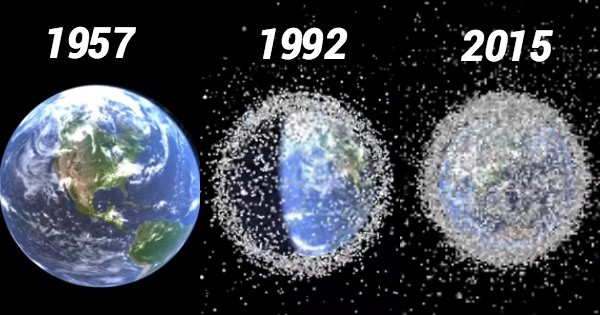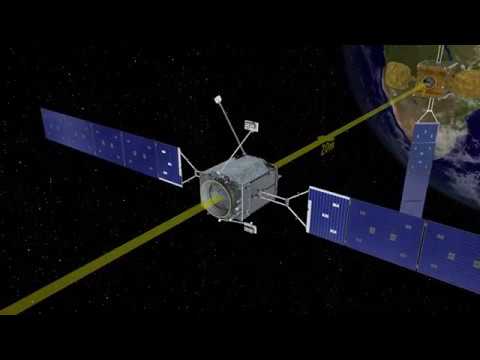On-Orbit Servicing: A New Industry And Solution To Space Junk
Dhir Acharya - Feb 05, 2019

With the increasing number of satellites both active and broken in space, on-orbit services are rising as a result.
- The First Space Hotel In The World Will Welcome 400 Guests
- Startup Builds Vehicle With Soviets Tech To Collect Space Garbage
- World's First Space Hotel To Begin Construction In 2025 With Rooms For 400 Guests
When there’s no fuel left on a satellite, it cannot keep flying on its orbit anymore, so it becomes useless and abandoned in space though its hardware may still be good as new. For the past decades, a huge number of satellites have been left floating around the Earth like that. For a better picture, imagine an airport full of planes with no fuel, abandoned on the tarmac.
As ugly as it may sound, somehow this has sparked a new business opportunity.
A bunch of useless satellites wandering in space

The US military has done some counting and generated a number of 23,000 objects in space. Among those, only 1,900 satellites are active.
The other objects are moving at about 20,000 to 30,000 kilometers per hour in space. Among them, almost 3,000 satellites that are inactive, 2,000 rocket pieces. The rest are thousands of fragments generated from either an intentional missile explosion of a Chinese satellite in 2007 or the crash between an aging Russian satellite and an Iridium satellite in 2009.
It gets worse
In the last five years, space has got 50 percent more satellites and the number is still growing, according to the Satellite Industry Association.

Global efforts
There’s no short-term solution to small-scale space trash, but several companies want to take those satellite off space.
Laurent Francillout, space security at CNES (French National Center for Space Studies) said that since 2008, the country has required satellite operators to program their spacecraft to return to Earth in 25 years so that they burnt up themselves. They are working to apply these principles more widely.

The French National Center for Space Studies (CNES)
In the case of Japan, Astroscale that was established in 2013, is working on a system to capture the debris as well as broken satellites in space. The company is planning to launch the system in 2020.
Another plan to get rid of the space junk is “Space Tug”. Airbus is developing this for 2023, Space Tug will grab old satellites then push them down to 200 kilometers above the Earth’s surface where they’ll burn up.
On-Orbit Servicing: A solution and opportunity
Earlier this month, at a meeting held in the US, SSL’s Vice President of space infrastructure and civil space, Al Tadros, said that countries are wasting hundreds of millions of dollars with the abandoned satellites in space.
Lately, new firms have appeared, with the aim at extending a satellite’s lifespan for that would be much more economical than sending a new one into space.
In 2021, SSL will launch a vehicle within the framework of the RSGS program (Robotic Servicing of Geosynchronous Satellites). At about 36,000 kilometers above Earth, the vehicle can service up to three dozen satellites among 500 active ones, mostly for telecommunications.
The upcoming spacecraft can attach itself to a satellite, inspect the target, refuel it, or even repair the satellite, change components, then put the satellite back to its precise orbit.
Tadros describe this new field as a financially “very, very big opportunity”.
Meanwhile, Intelsat, a telecommunication giant with 50 geostationary satellites chose another plan. The company signed a contract with Northrop Grumman’s Space Logistic, for a system that works like a tow truck.
Space Logistic’s vice president Ken Lee said MEV, the mentioned system, is very simple, which will latch onto a broken satellite and relocate it in its orbit.

The MEV
Featured Stories

Features - Jul 01, 2025
What Are The Fastest Passenger Vehicles Ever Created?

Features - Jun 25, 2025
Japan Hydrogen Breakthrough: Scientists Crack the Clean Energy Code with...

ICT News - Jun 25, 2025
AI Intimidation Tactics: CEOs Turn Flawed Technology Into Employee Fear Machine

Review - Jun 25, 2025
Windows 11 Problems: Is Microsoft's "Best" OS Actually Getting Worse?

Features - Jun 22, 2025
Telegram Founder Pavel Durov Plans to Split $14 Billion Fortune Among 106 Children

ICT News - Jun 22, 2025
Neuralink Telepathy Chip Enables Quadriplegic Rob Greiner to Control Games with...

Features - Jun 21, 2025
This Over $100 Bottle Has Nothing But Fresh Air Inside

Features - Jun 18, 2025
Best Mobile VPN Apps for Gaming 2025: Complete Guide

Features - Jun 18, 2025
A Math Formula Tells Us How Long Everything Will Live

Features - Jun 16, 2025
Comments
Sort by Newest | Popular